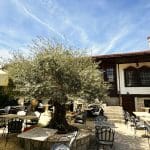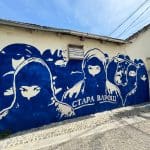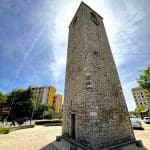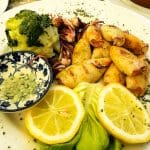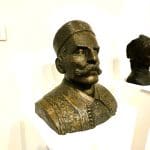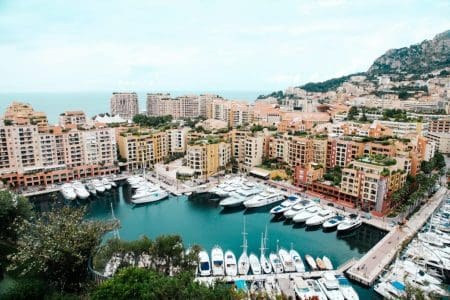Probably one of the most overused words in travel literature is undiscovered – I confess to be a repeat offender. While Montenegro has been on the tourism radar for quite sometime, even though it is dwarfed by its Balkan neighbour Croatia, its capital Podgorica still perhaps lays claim to the undiscovered title.
The main purpose of my trip to Montenegro was to stay at the Hyatt Regency in Kotor on the Balkan country’s beautiful coastline, its capital was merely an amuse bouche to the main course. I expected little of the town that used to be called Titograd until 1991, after the former President of Yugoslavia, anticipating concrete blocks and Soviet style architecture in various shades of grey. I was to be most pleasantly disappointed.
Things to Do in Podgorica Montenegro : Parks and Rivers
Although it might be an exaggeration to call Podgorica a green city, it certainly does have a number of parks as well as four rivers running through it. The city that translates as “under the hill” also has the most beautiful backdrop, surrounded by mountains.
Particularly on a spring day when the blossoms were out, and the Podgorica weather was sunny and warm, the Montenegrin capital was full of colour, making for an interesting half-day walking tour.
Museums and Galleries of Podgorica
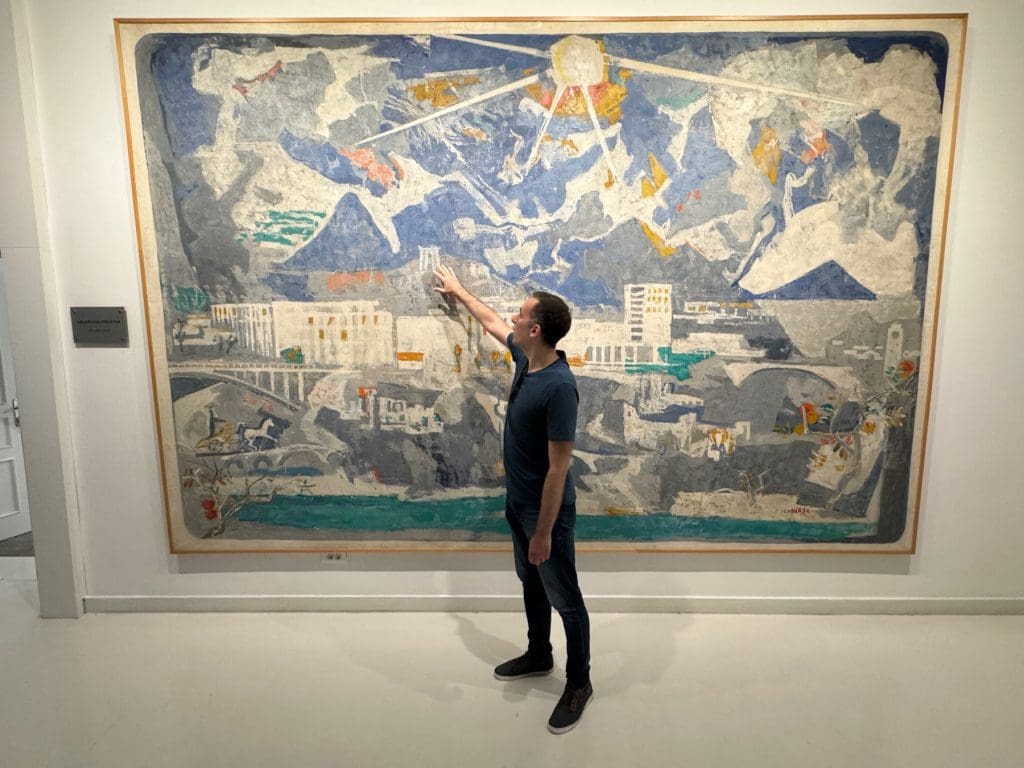
This started at the Podgorica Museum and Gallery opposite Karadjordje Park. Inside is an excellent mural by Peter Lubarda from the 60s which tells the story of the city populated by both Romans and Ottomans, as well as more recent invaders.
Although the city has a long history, sadly very few of the buildings survived the Second World War. Next to the Ribnica river is a bookshop and coffee bar called Karver, created from an old Ottoman Hamman, which is now squeezed beneath a major road bridge. Apparently, two domes were removed for the bridge’s construction. It is now a chilled out area where locals partake in the two compulsory activities in Montenegro – drinking coffee and smoking cigarettes.
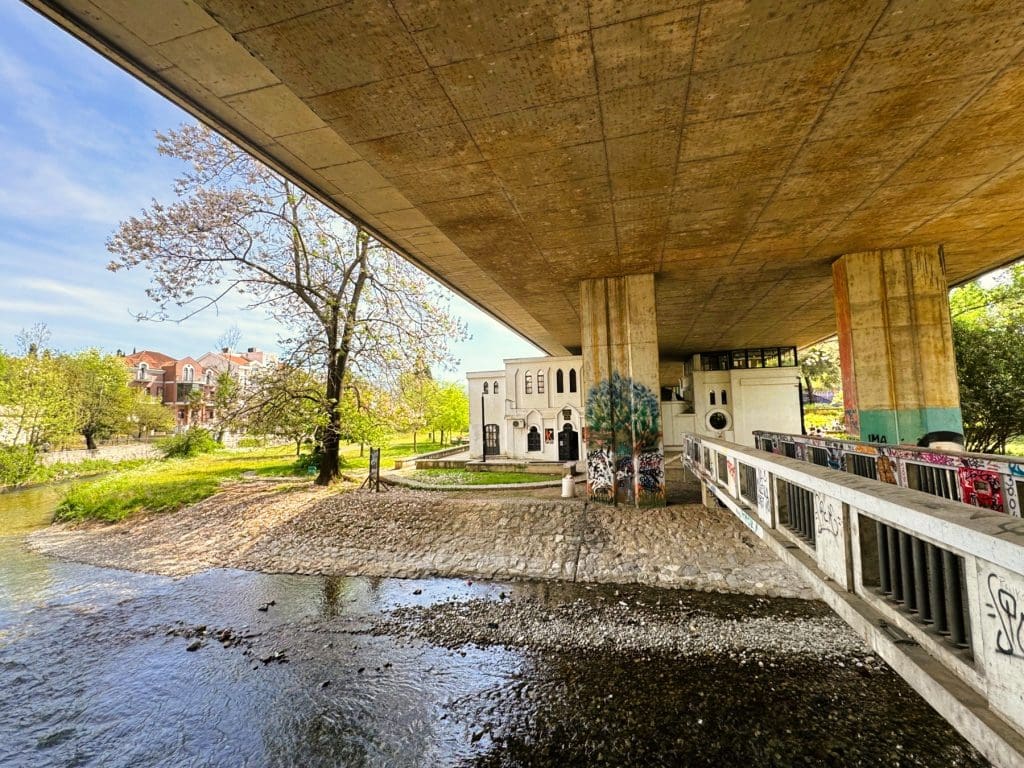
One of the buildings which survived the Second World War, Kuslevova Luca was built for a dentist who moved here at the start of the 20th century. It has now turned into an art gallery, with an interesting solo exhibition by Rastko Radulović on cats.
All the official museums and galleries in the Podgcorica are free to enter, although it is best to check they are open on the day you are visiting.
Old and New Podgorica Montenegro
Freedom Street is the main shopping drag. This leads onto Independence Square, which is where the Podgorica Christmas market is held each year. Close to this is the City Hall. The National Theatre is opposite another of the city’s green spaces Njegosev Park, with its statue of Peter II, who is regarded as the most important person in the history of Podgorica.
Crossing the Moraca river, you get great views of the Millennium Bridge on one side and Hotel Podgorica on the other. Designed in 1967 by the female architect, Svetlana Kana Radević, the latter is a wonderful example of Brutalist architecture. Passing down some steps you reach a great spot to take photographs of the hotel at the point where the Moraca and Ribnica rivers meet.
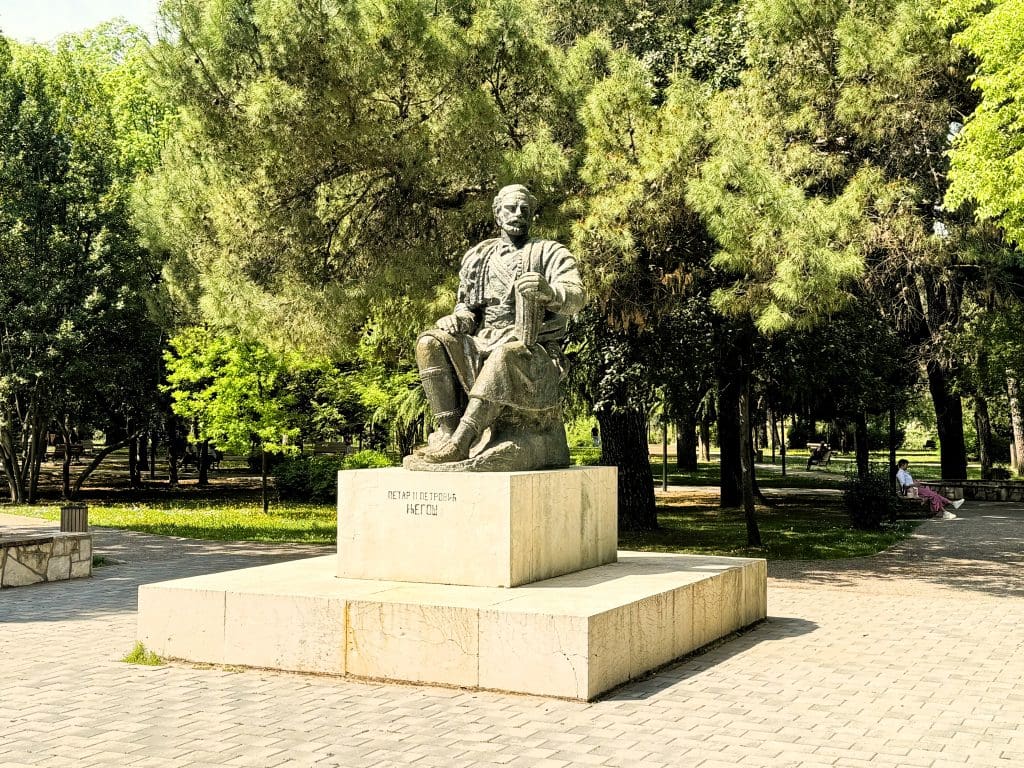
Little remains of Depedogen, the Ottoman fortress, but it is beside the old town (Staros Varoš), which has a couple of mosques as well as impressive street art. Around the corner from this is the Old Clock Tower, which used to be the largest structure in the city when it was built in the 18th century, although it is only 16 metres high and is now dwarfed by more modern blocks. It once served as a watch tower, but it’s main purpose now is to be posted on people’s Instagram accounts.
I confess I had never heard of the sculptor Risto Stijović before I entered his studio and gallery which was created in the house where he lived. The Montenegrin artist moved to France where he was trained and became a close friend of Mondrian. You can detect certain influences of the more famous artist in Stijović’s work, especially some of the sculptures upstairs. Downstairs there is a series of sculptures carved from wood.
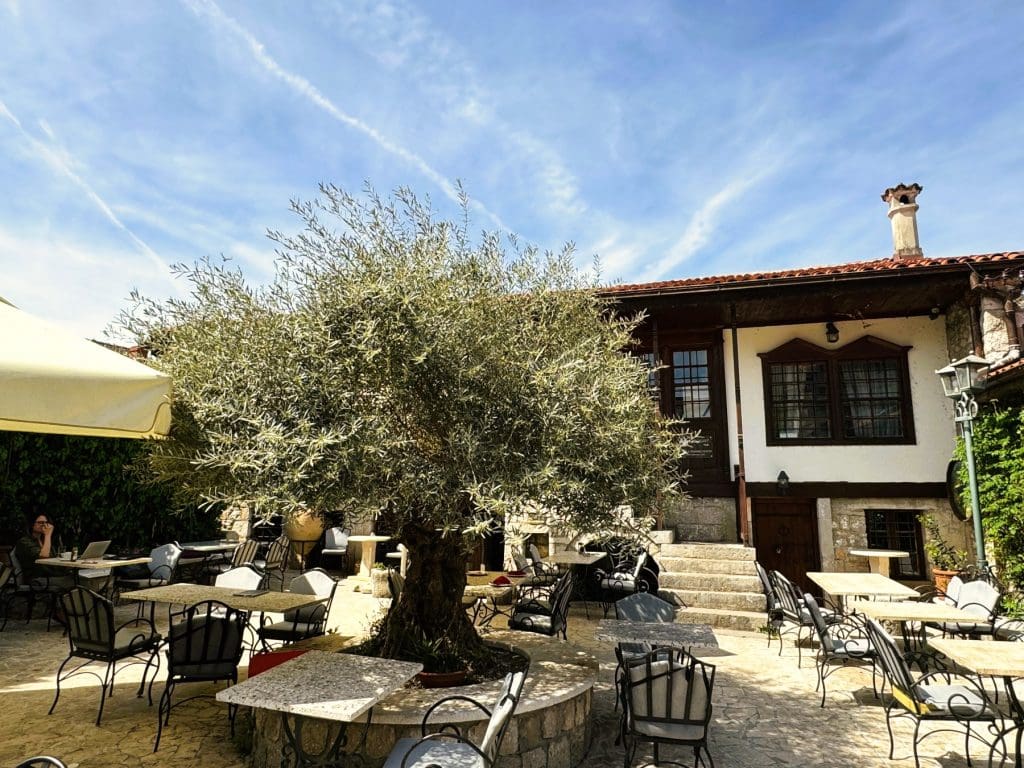
We were fortunate enough to be shown around the gallery by Dr Sladjana Zunjic who spent 10 years developing her doctorate in art in the intra-war period. She says that the gallery is a ‘healing art space’ with its great light and energy. Certainly, a visit there made me feel better.
After this we had lunch at Lanterna a wonderful restaurant in one of the oldest buildings in Podgorica dating back to 1630. We dined outside on the beautiful terrace area where we were served the most amazing Mediterranean food, including baby squid, sardines, olives and local cheeses, in a meze format. One of the local dishes served here was kačamak, a potato dish with cheese and flour. However, I think the smoked trout was the stand out dish.
Biggest Vineyard in Europe
Before planning my trip to Montenegro, I had not ever heard of the country’s wine. However, the largest single location vineyard in Europe is located on the outskirts of the city near Podgorica airport

The Plantaže vineyard covers some 2,310 hectares. The vines were planted between 1977-82, and the company now produces some 13 to 15 million litres each year.
After lunch we headed to Šipčanik which is one of their three wine cellars. Cut into rocks, the cellar’s tunnel used to house military planes. The place has somewhat of the air of a James Bond villain’s lair. It was converted to wine storage in 2007.
After a short tour of the cellar, we got down to the serious business of tasting the wines, served with excellent local cheese, olives and dried fruit. We started with two whites, the first of which was made with the Krstac grape you can only find in Montenegro, and a Malvasia. The first was strong with minerality due to the large amounts of limestone in the soil, and the latter was fruitier. This was followed by three reds including a Vranac, which was a very dark and smooth wine and is also their best seller. I enjoyed the Vranac the most while my companion preferred the Krstac.
Returning to our hotel, the Ramada, which was the first branded franchise hotel in Podgorica when it opened in 2012, we quickly resolved to try some of the bars. We certainly had no need for more food.
On our earlier Podgorica city tour we had noticed a few cafés, restaurants and bars spread along Njegoševa street near the City Hall. Podgorica is a very walkable and safe city, so within twenty minutes or so we had settled down at München Bar and had our first taste of the local Niksicko beer with which we were to get well acquainted during our week’s stay in Montenegro. Form Munich, it was a short walk to Berlin, another bar where we tried out the unfiltered and superior rendition of the national beer of Montenegro.
Day Trips From Podgorica Montenegro: Cetinje
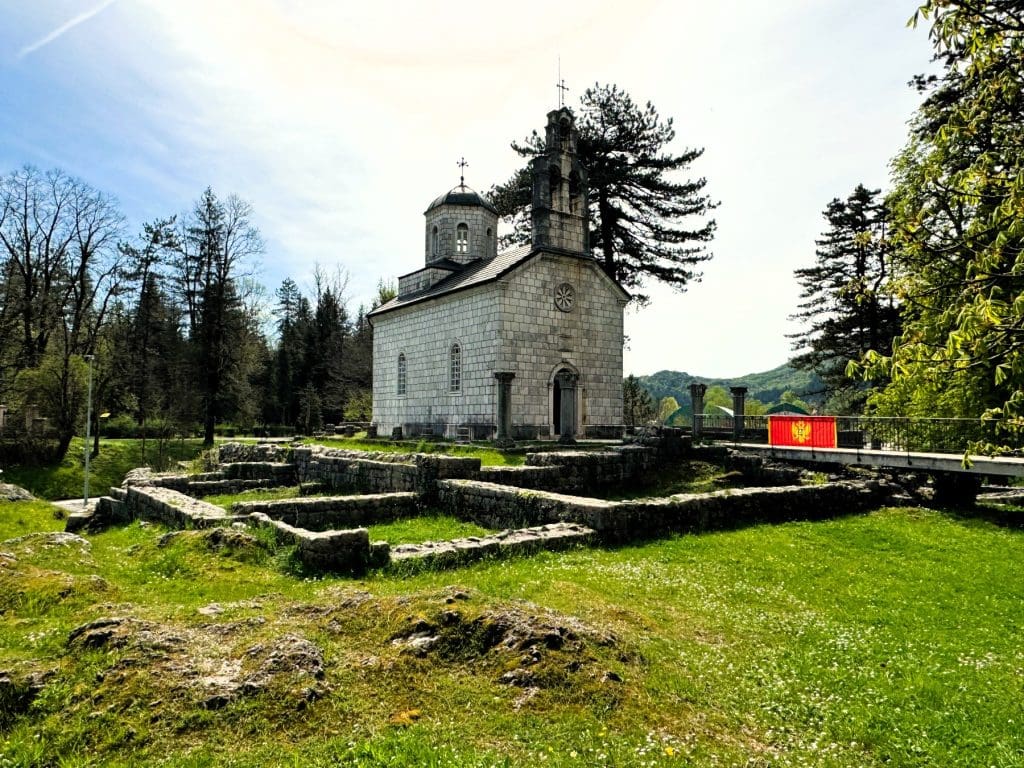
The next day we hired a taxi to drive us from Podgorica to Kotor. This allowed us to stop off at Cetinje, which was the former capital of Montenegro. The drive up into the mountains with its sweeping views back towards Skadar Lake National Park was spectacular, so we paused to take some photographs.
Cetinje is a beautiful city which was founded by Ivan Crnojevic in 1481. Set in the hills, temperatures here are cooler than by the coast, which can reach 45C in the summer, making this an excellent choice for those wishing to escape the heat.
Entering the city, we notice the Lovćenska vila monument next to the Vlaška Church, built in the middle of the 15th century. The large monastery that dominates Cetinje is somewhat more modern built in the 18th century on the site of an old palace. Inside it is a picturesque small church.
Podgorica to Kotor
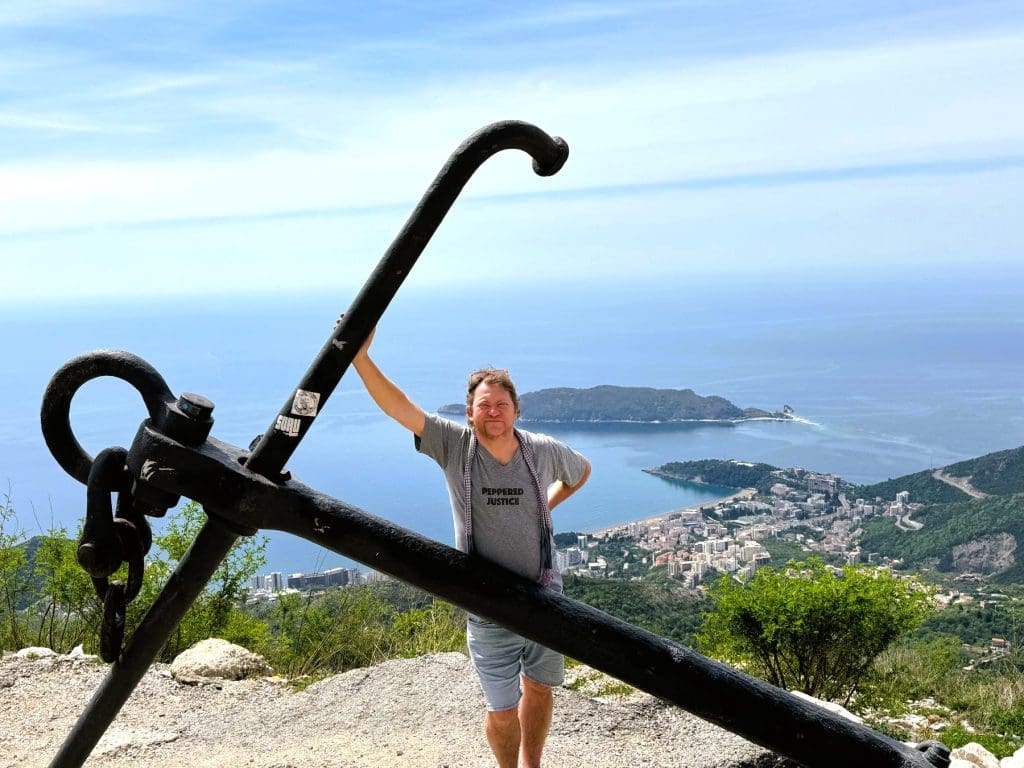
After having a smokeless coffee in one of the many cafés catering to tourists’ needs we continued our journey up through the mountains and along the coast where we could see the old town of Budva before eventually reaching Kotor, which was to be our home for the next four nights.
Where To Stay in Podgorica Montenegro
The Ramada Podgorica is a very pleasant four-star hotel which mixes MICE, business and leisure. The rooms were spacious and comfortable. The terrace Bardot bar named after the French actress makes an excellent place to conclude your evening. Best of all, is the breakfast served on the rooftop bar, which was excellent and had sweeping views of both city and mountains beyond.
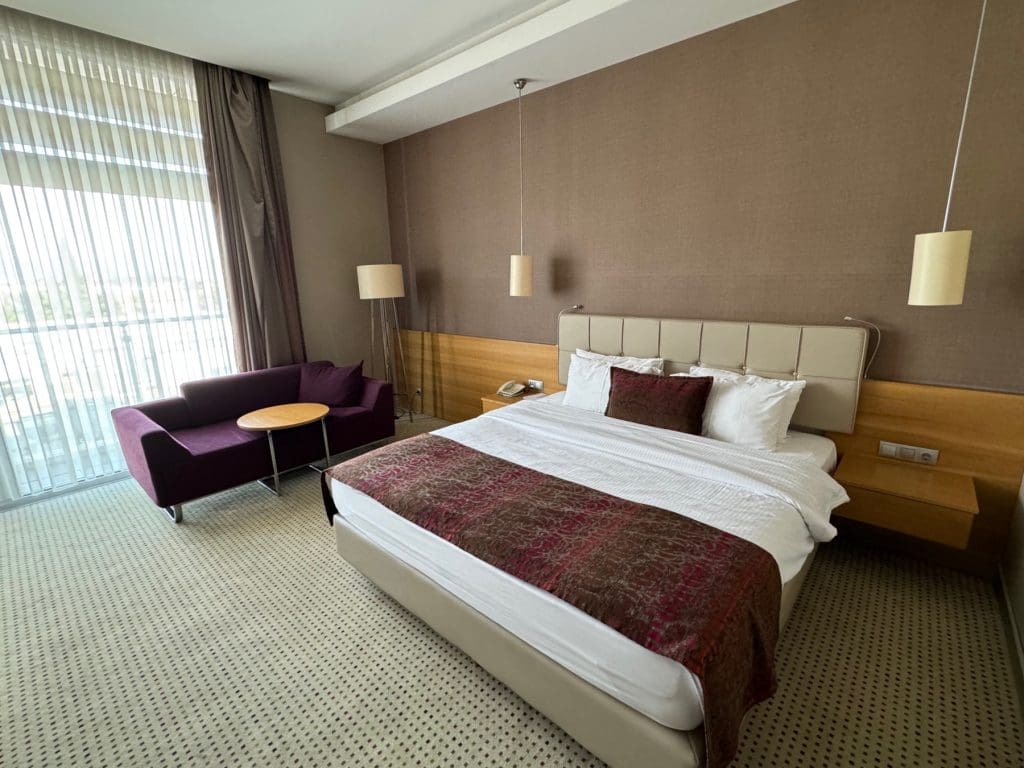
Flights to Podgorica from UK
Mark took a Wizz Air flight from London to Podgorica from Gatwick Airport, using Holiday Extras for the Meet & Greet service as well as staying a night at the excellent Hilton London Gatwick Airport hotel. Ryanair also runs a service from London to Podgorica from Stansted.
Holiday Extras is the market leader in UK airport parking, hotels, lounges, and transfers – and last year most of their customers saved at least £100 on their airport parking vs the price they’d have paid on the gate. Booking an overnight hotel with parking means you can enjoy more holiday with less hassle. Plus with Flextras, if you need to cancel or amend you can without charge. An overnight hotel with six days overnight parking at London Gatwick costs £144.99. For more information and to book, HolidayExtras.com or call 0800 316 5678.
Is Podgorica Worth Visiting?
My verdict is a resounding yes, especially as a starting point for exploring Montenegro, a fascinating country.
Podgorica Montenegro Photo Gallery
Things To Do in Montenegro
To discover more things to do in Montenegro, visit : montenegro.travel/en. To discover all there is know and the things to do in Podgorica go to Podgorica Travel.
Images: Mark Bibby Jackson.
